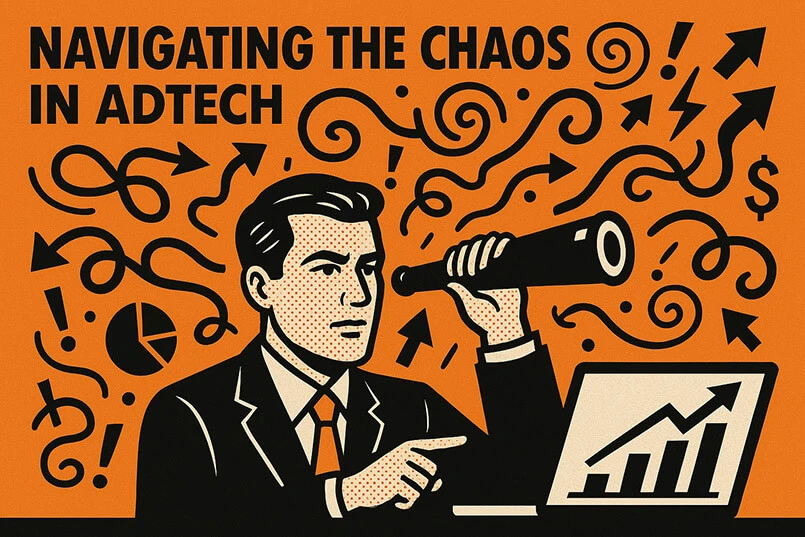TrinityP3 recently had its planning conference in Sydney. With regional consultants from UK, Europe, Asia and Australia coming together for a fantastic series of sessions where they challenged not only each other’s thinking, but also, the industry as a whole.
In particular, one statistic from Michael Farmer stood out for me.
Based on Michael’s US agency Scope of Work assessments, he identified, that on average, 55% of creative work from an agency is ‘adaption’ work.
Holy moly
Just sit back and comprehend this stat for a minute.
Only 45% or work is origination.
55% of work is less strategic.
55% of work is being adapted for channel implementation.
55% of work is lower value-add.
Wowsers.
And to manage this workload, agencies are hiring more and more production based and lower cost ‘doers’. Or dare I use a US term,‘juniorising’.
Yet, based on TrinityP3 agency resource analysis, we also know that agencies remain relatively understaffed and have been downsizing as revenue growth has steadily declined since the early 2000s to modest single digit numbers.
So agencies not only have lower cost doers, but the doers are doing more work in their day just to try and keep up with the explosion of outputs. Leading to burn out and decline in tenure.
That’s a recipe for disaster in our books.
The digital conundrum
However, it’s not an easy problem to solve.
There’s a massive conundrum. As work becomes more technical, more and more specialists are required. Rather than one or two resources to do copy writing and design, a myriad of experts are required.
Take a $100,000 website evolution project for example. Classified as adaption.
Not only do you need a strategist to define the role of the website, you need a creative team to develop an overarching concept for all channels and then define how the idea applies to the website. Then you need a user experience (UX) expert to take the site map and turn it into logical wireframes to make a user’s journey functional, logical and easy.
Then you need a user interface (UI) expert to provide a specific design that makes the site aesthetically appealing and inviting to use. You’ll need a front end designer. You’ll need videographers and photographers to provide engaging content. You may also need a lower cost, long copy specialist to focus on long form copy to gain a search engine advantage from keyword, phrase and sentiment perspectives.
You’ll need a SEO expert to combine both their technical skills and content skills so that the website shows up at or near the top organically in search engine queries. You’ll need a specific developer with a skillset in the web applications and server-side (or backend) technology being used. You’ll need a data strategist to identify the core data capture requirements, reporting structures and overall website performance measures.
You may also need an email specialist to build out user journeys and content for users requesting information from the site. Not to mention e-commerce and conversion rate expertise. And the list goes on.
Many clients get a headache just thinking about it.
The point being, with the rise of production resources required, there hasn’t been a corresponding rise in value.
TrinityP3 has seen a shift from traditional advertising to digital line items, and more recently, a % switch back to traditional spending.
However, with agencies adapting more and more work, and needing more and more resources, they are struggling to be able to charge fair value for their work.
It makes me wonder why clients agree to do so much adaption work. Or is it merely a symptom of the way agencies measure outputs – based on head hours. And therefore in a more resource intensive digital world, the pricing model is broken.
Imagine a retailer paying $100,000 for a bricks and mortar site. Retailers know that after construction, licences, insurance, fixtures, operations, equipment, software, hardware, and other technology, the price tag is massive.
Or worse still, if your just renting space, then $100,000 wouldn’t even cover rent which is typically 25 to 30% of revenue, but in some areas, could be over 50 to 60% of revenue.
A local retailer I know, Susan Steel, founder of toy shop Bambino Manly was forced to move from Freshwater (on the northern beaches of Sydney) when her landlord started asking over $130,000 just for annual rent.
So back to the 55%
In the website example, I wouldn’t classify a website evolution as adaption.
A website needs to be carefully considered and treated as one of the most valuable assets of a company. And by doing so, an appropriate budget needs to be assigned.
Should this come from the A&P budget or IT budget?
And what form of fixed cost should it be – A&P or part of the cost of premises, or should it be split?
But I guess the overall point here, is that with 55% of work being ‘adaption’, then it makes me wonder why marketers keep adapting so much.
Surely, there’s a need to focus more activity in less and less channels, but make it more and more impactful.
Is it time to prioritise activity, and pay more for less, rather than pay less for more?
As a first step, the key is to identify what level of resources are being utilised across what types of outputs.
This is not an easy task when on average, some agencies are pumping out over 300 deliverables per creative team (note, it used to be 11 deliverables per creative team back in 2010), and 3,000 deliverables across all media types and all teams (based on Michael Farmer’s Creative ScopeMetrics® analysis).
Calculation
Have you identified what % of your activity is origination versus adaption?
If not, then maybe TrinityP3 can assist to identify the split.
And more importantly, TrinityP3 can help you identify what’s not working, in order to prioritise resources and activity on what matters most to your business performance.
The opportunity is to move away from rates and start measuring productivity and identifying a measure of the resource required for relevant outputs.
Our Scope of Work Management service evaluates your current agency scope of work and recommends the best approach, calibrated to your needs. Read more here




